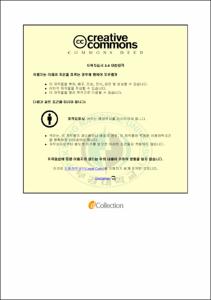하수처리수 재이용을 위한 직접모래여과와 UF 막 공정의 적용
- Alternative Title
- Application of direct filtration and UF membrane process to secondary effluent treatment for reuse
- Abstract
- The object of this study was application of direct filtration and UF membrane process to secondary effluent treatment for reuse. The turbidity of secondary effluent is less than 10 NTU and constant, so direct filtration was used without sedimentation. Filter media was used sand(Effective Size : 0.44, Uniform Coefficient : 1.26) and anthracite(Effective Size : 1.02, Uniform Coefficient : 1.26). Filter bed was composed monomedia and dual media. Dual media was more effective than monomedia. Optimum coagulant dosage was 40mg/l(jar-test) and 60mg/l(direct sand filtration). At the optimum coagulant dosage in order to know the effect of slow mixing intensity to filtration slow mixing is performed at various mixing intensity. 30RPM slow mixing intensity has good filtered effluent. Low filtration rate(7m/h) was more effective than high filtration rate(10m/h). Regenerated cellulose membrane was used for UF membrane. The coagulant dosage and slow mixing intensity was considered to affect membrane flux. 45RPM slow mixing was more effctive than 30RPM. At the UF filtration, pretreatment using coagulation improved to flux. The optimum process was selected by considering direct filtration and UF membrane filtration. When these process was used for pretreatment of reverse osmosys, the SDI(silt density index) was estimated. For Reverse osmosis, pretreatment using UF membrane was necessary.
- Issued Date
- 2010
- Awarded Date
- 2010. 2
- Type
- Dissertation
- Keyword
- 하수재이용
- Publisher
- 부경대학교
- Alternative Author(s)
- Park sang-ju
- Affiliation
- 부경대학교 대학원
- Department
- 대학원 환경공학과
- Advisor
- 강임석
- Table Of Contents
- 목 차
제 1 장 서 론 1
제 2 장 문헌연구 3
2.1 하수처리수의 재이용 배경 및 현황 3
2.1.1 하수처리수의 재이용 배경 3
2.1.2 국내외의 하수처리수의 재이용 현황 6
2.2 하수처리수의 재이용 기술 9
2.2.1 하수처리수 재이용 전처리 기술 9
(1) 응집 메커니즘 9
가 금속염 응집제의 가수분해 9
나 응집 메커니즘 12
2.2.2 여과공정 20
(1) 여과메커니즘 20
(2) 직접여과 25
(3) 하수처리수의 직접여과 27
2.2.3 막분리 공정 30
(1) 한외여과(UF) 공정 31
(2) Revers Osmosis 공정 36
제 3 장 실험장치 및 수질분석방법 38
3.1 응집 및 혼합실험 장치 38
3.2 여과 장치 40
3.3 막분리 장치 42
3.4 수질분석방법 43
제 4 장 결과 및 고찰 46
4.1 하수처리수의 수질특성 및 재이용 기준 46
4.2 직접모래여과를 이용한 재이용 50
4.2.1 여재의 특성에 따른 여과 특성 50
4.2.2 응집제 주입량에 의한 특성 52
4.2.3 완속혼합에 따른 여과 특성 55
4.2.4 급속혼화 장치 및 여과속도의 영향 61
4.3 UF 막을 이용한 재이용 65
4.3.1 응집제 주입량에 의한 특성 67
4.4 직접모래여과와 UF 막을 이용한 재이용 71
4.4.1 응집제 주입량에 의한 특성 71
4.5 RO 전처리로서의 SDI 특성 73
제 5 장 결 론 76
참 고 문 헌 79
- Degree
- Master
- Files in This Item:
-
-
Download
 하수처리수 재이용을 위한 직접모래여과와 UF 막 공정의 적용.pdf
기타 데이터 / 4.14 MB / Adobe PDF
하수처리수 재이용을 위한 직접모래여과와 UF 막 공정의 적용.pdf
기타 데이터 / 4.14 MB / Adobe PDF
-
Items in Repository are protected by copyright, with all rights reserved, unless otherwise indicated.